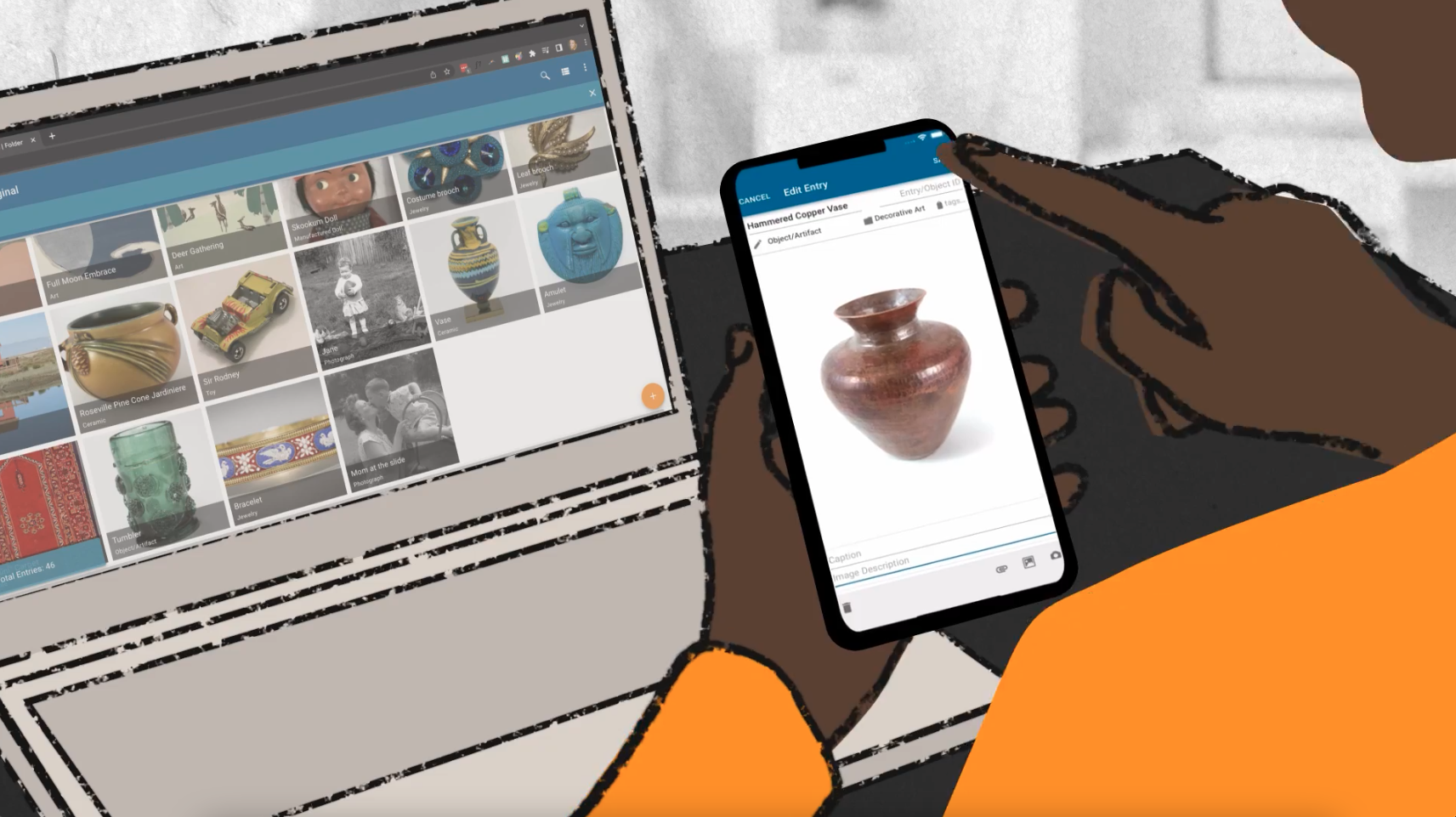
Digital illustration of a person using CatalogIt on both a laptop and a smartphone.
Perhaps one of the most effective ways to safeguard your collection is also the simplest: using a concise and consistent numbering system. Commonplace in all museums, accession numbers (and entry/object ID numbers) create a direct link between that object and its associated information. This unique number is perhaps the most powerful tool in identifying specific objects and tracking their history.
How is this safeguarding your collection? In order to properly care for and plan for the future of your collections, you need to know exactly what you have. Your unique object ID number is the easiest way to link your object with all of the information, location, history, and other data pertinent to that object. While museums have been doing this forever, it is also something private collectors can, and should, employ to track their collections as well. CatalogIt enables you to clearly define your numbering system and assign a unique number to everything in your collection.
Historically these numbers were recorded in bound accession ledgers. These ledgers linked every object to its intake information. The object or entry ID number is historically linked to the accession number, which is usually the first two numbers of the entry ID. In the most common system, a number such as 2021.2 would represent the second accession (or acquisition) of 2021. A well organized accession ledger clearly linked all the items in a museum collection to the intake data--the source, whether it was a gift or purchase, the value, the list of objects associated with the accession and the initial location of the collection. These ledgers, which are still in use today at many museums to retain the historic information on collections, were later accompanied by a series of index cards that were organized by number, by donor/source, and by collections type. These cards and ledgers are now replaced by collection management systems like CatalogIt.
How do you select a numbering system? Two keys to a good numbering system are simplicity and consistency. Don’t over-complicate your numbering, and be sure to use the same format throughout your collection. The CatalogIt museum account defaults to a standard tripartite system. The three parts include: year, collection, and item number. For example: 2021.3.1 is the first object of the third collection acquired in 2021. This is also a system an organization or a private collector can easily adapt to their needs. If you purchase or acquire one or multiple objects at once, you can use the year - e.g. 2021. The second number is the acquisition group- it can be used to denote items you acquired together. The third is the number of the object. If you acquired only one item, your number would be 2021.3.1. For acquisitions of more than one item: 2021.3.1, 2021.3.2, 2021.3.3, and so on. Adding a letter designation will also help you identify your collections with parts - such as a teapot and its lid. 2021.4.1.a and 2021.4.1.b is a good way to show that your item has parts--“a” for the teapot and “b” for the lid.

So what do you do if you are cataloging from scratch and don’t know when you acquired the object? You can create a legacy number starting with the year you are cataloging it - 2021 - then create a legacy group--.1 for example, and then proceed in numerical order for the rest. Private collections also often use a two part system - year and item number: 2021.4 or a numbering system that includes a letter designation for a category. For example, A2021.5 might be the fifth item of art you collected in 2021. E2021.6 may be the sixth item of ephemera you collected in 2021. Letters such as this can become confusing though--was B for Books or Bottles?
Aside from the Entry ID field in CatalogIt, you also have the ability to capture and record all old numbers attached to a collection. The “Other Number” field allows you to easily retain and search any other numbers associated with your collections. We’ve also made some recent improvements to this field which allow you to include the “type” of number so you can easily clarify what the Other Number is referencing. These numbers could include an appraisal reference number, a patent or part number, or an old number used by a previous collector. The field is repeating so you can include as many “other numbers” that you would like. This helps make all numbers associated with your collections easily searchable and findable.
However you choose to number your collections, remember to be consistent. It also helps for you to create a short numbering guide so that others that view your collection will also understand your system. And remember, simpler is always best.
Do you have questions about easy ways to create a numbering system for your collections? Email us at support@catalogit.app and we will be happy to review options with you.

